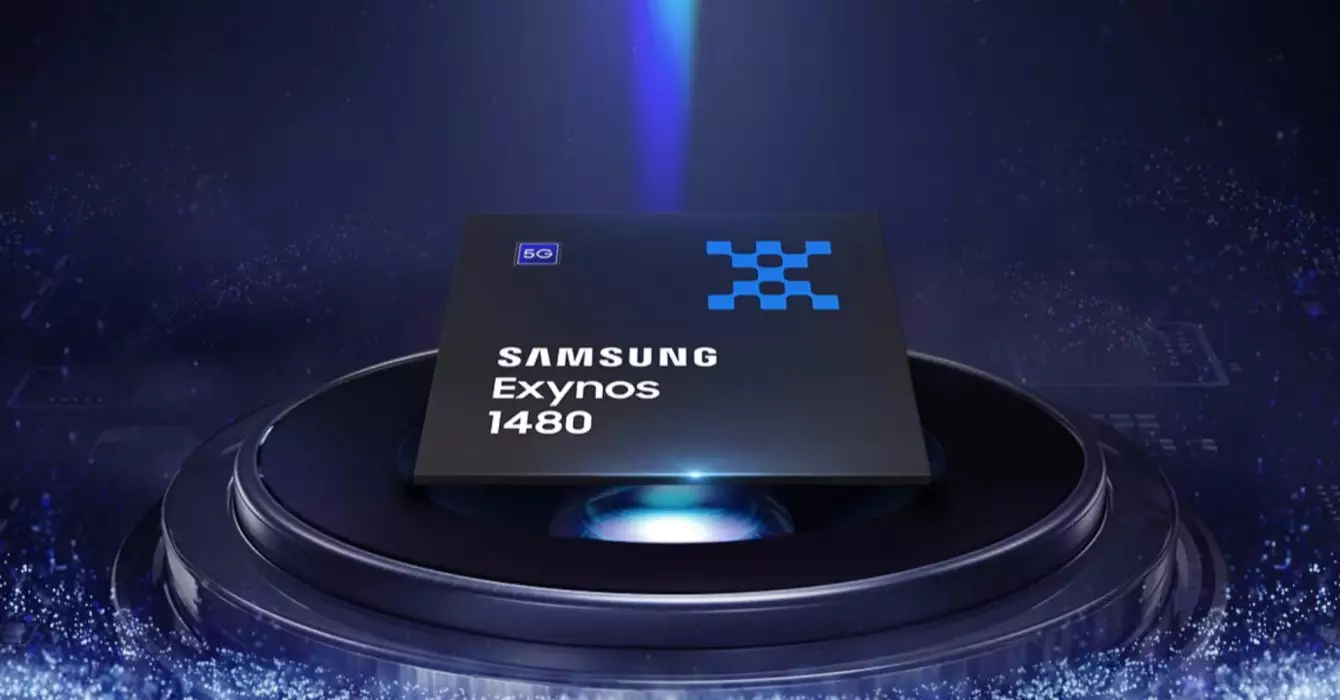Samsung Exynos 1480 4nm SoC launched with Xclipse 530 GPU based on AMD RDNA 2 architecture

Samsung has officially debuted the Exynos 1480 4nm 5G SoCs following the launch of the Galaxy A55 smartphone, which is powered by this chipset. Serving as the successor to last year's Exynos 1380, the Exynos 1480 brings notable enhancements in CPU performance and power efficiency.
Enhancements in CPU Performance and Power Efficiency -
Despite utilizing Cortex-A78 and Cortex-A55 CPUs, the Exynos 1480 sees an increase in clock speeds and introduces a new Xclipse 530 GPU, which is based on the latest mobile AMD RDNA architecture previously exclusive to Exynos flagships.
With its 4nm process technology, the Exynos 1480 boasts an overall 22% improvement in efficiency compared to its predecessor, leading to reduced power consumption and enhanced battery life, according to Samsung. Having utilized the Galaxy A55 featuring this chipset, I have personally observed significant improvements in battery life compared to the Galaxy A54.
The Cortex-A78 high-performance cores now operate at a clock speed of 2.75 GHz, up from 2.4GHz in the predecessor, while the Cortex-A55 power efficiency cores maintain a clock speed of 2GHz. Samsung claims that the Exynos 1480 offers a 13% improvement in app launch times and an 18% enhancement in multicore performance.
Moreover, Samsung asserts that the Exynos 1480 delivers a fourfold improvement in AI performance over its predecessor.
GPU Performance -
The Xclipse 530 GPU, based on the latest mobile AMD RDNA 2 architecture, promises a 53% increase in performance compared to the Mali-G68 MP5 GPU featured in the Exynos 1380.
The Exynos 1480 supports Full HD+ displays with refresh rates of up to 144Hz, up to 200MP camera resolutions, and 4K 30fps video recording capabilities, consistent with the Exynos 1380. However, notable improvements are observed in the modem, alongside the inclusion of Wi-Fi 6E support.
Samsung Exynos 1480 vs Exynos 1380 Specifications -
| Exynos 1480 | Exynos 1380 | |
| Display | FHD+ @ 144Hz | FHD+ @ 144Hz |
| Process | 4nm (EUV) | 5nm LPE (EUV) |
| RAM/Storage | LPDDR4x, LPDDR5, UFS v3.1 | LPDDR4x, LPDDR5, UFS v2.2/UFS v3.1 |
| CPU | 2x Cortex-A78 @ 2.75GHz, 6x Cortex-A55 @ 2.0GHz | 4x Cortex-A78 @ 2.4GHz, 4x Cortex-A55 @ 2.0GHz |
| Graphics | Samsung Xclipse 530 GPU | Mali-G68 MP5 |
| Camera | Up to 200MP in single camera mode, Single-camera 64MP @30fps, Dual-camera 32+32MP@30fps, p to 4K 30fps | Up to 200MP in single camera mode, Single-camera 64MP @30fps, Triple-camera 16+16+16MP @30fps, Up to 4K 30fps |
| Modem | 5G NR Sub-6GHz 5.10 Gbps (DL) / 1.28 Gbps (UL), 5G NR mmWave 4.84 Gbps (DL) / 0.92 Gbps (UL), LTE Cat.18 6CC 1.2Gbps (DL) / Cat.18 2CC 211Mbps (UL) | 5G NR Sub-6GHz 3.79Gbps (DL) / 1.28 Gbps (UL) 5G NR mmWave 3.67Gbps (DL) / 0.92 Gbps (UL) LTE Cat.18 1.2Gbps (DL) / Cat.18 211Mbps (UL) |
| Connectivity | Wi-Fi 6E, Bluetooth 5.3 | Wi-Fi 802.11ax (2×2 MIMO) with Triple-band, Bluetooth 5.3, FM Radio Rx |
| GNSS | GPS, GLONASS, BeiDou, Galileo | GPS, GLONASS, BeiDou, Galileo |
Availability -
The Samsung Exynos 1480 chip is already integrated into the Galaxy A55 smartphone, and it is anticipated that additional Samsung smartphones, as well as potentially some tablets, will adopt this chip in the future.















